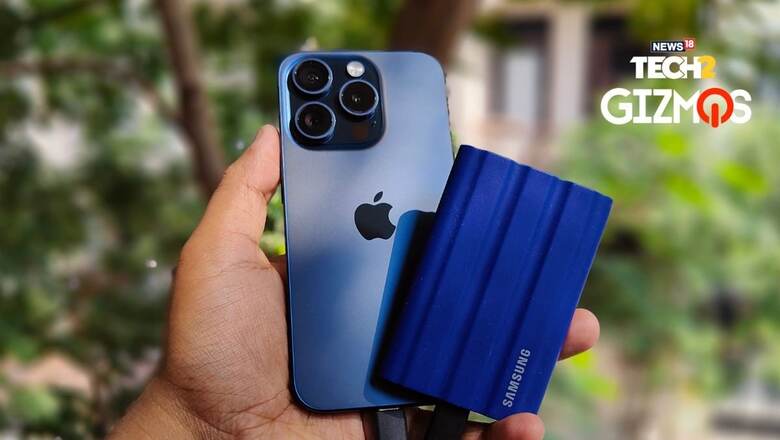
views
While we haven’t seen any major changes this year, the changes that have been made have made products more mature and practical to use than their 2022 counterparts.
For example, the iPhone 15 Pro has a new ProRes LOG recording feature, and Google has finally realised that its strength lies in AI with the launch of the Pixel 8 series. Smartphones have come a long way, and there’s something for everyone now.
Why Iterative Upgrades Compound Over Time
Smartphone features add up over time like compound interest, giving you a remarkably different product. You might dismiss the iPhone 15 Pro as a minor specifications bump or just notice the change to titanium as the frame material, but for creators, the ability to shoot in LOG has made the iPhone a serious pocket-sized content powerhouse.
The ProRes LOG video from the new models is easy to grade, and it essentially removes the digital look while preserving all the details you might want to tweak. This puts it in a class of its own, and when combined with other features, and features Apple has layered over the years, the iPhone finally lives up to its ‘Pro’ moniker.
Like Apple, Google also made incremental changes to the Pixel 8 series and doubled down on what made the Pixel 6 and Pixel 7 really good options. The company realized that its strengths lie in artificial intelligence and machine learning, and that’s why it’s committed to pushing AI-powered features for the Pixel 8 Pro. In fact, the Pixel 8 Pro now comes with Google’s latest LLM called Gemini, and it’s the only phone to do so.
The Pixel 8 Pro also offers a refined design with a flat display instead of a curved panel, and this change along with its continued focus on AI makes it a really mature product.
‘Nothing’ Changed With the Nothing Phone 2?
Last year, Nothing released the Phone (1), which was loaded with flashy features like the Glyph lighting and the transparent back. This year, the London-based brand released the Nothing Phone (2), which is an iterative update to the original device.
Again, the iterative approach made the phone a solid contender in the upper mid-range, entering the level premium market. The brand refined the design with the back glass curvature and reduced bezels. Additionally, the phone now offers interaction with apps like Zomato to indicate where your order has reached, which is truly unique.
The specifications bump was also modest. The phone features a Snapdragon 8+ Gen 1, which isn’t the latest but still provides a premium, fast, and reliable experience. Nothing has also made the Nothing OS feel a lot more premium and pleasant, thanks to all the polish to the UI, how animations feel, and how the OS looks. All of these minor changes add up to create a product that is a solid choice under the Rs 40,000 price bracket moving into 2024.
The same can be said about other manufacturers like OnePlus as well. Their updates are modest compared to previous models, but the added efficiency, better software support, and overall stability make their products feel substantially better than before.
No matter which category you choose to buy a phone in this year, or in early 2024, it’s really hard to find a bad phone. And with next-gen models like the iQOO 12 coming out, this trend looks set to continue into next year.




















Comments
0 comment